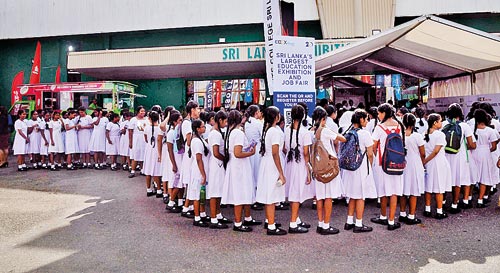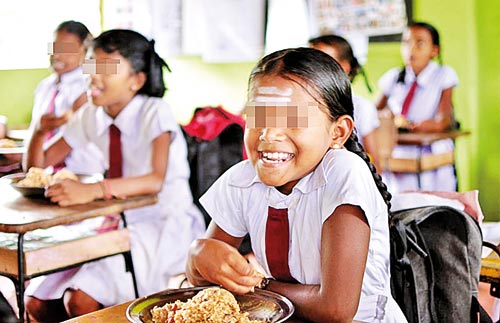News
Sri Lanka’s girls among world’s most underweight – 410,000 malnourished
 Girls in Sri Lanka count among the world’s most underweight, a form of malnutrition, a life-endangering condition that has remained unchanged in the country for more than three decades.
Girls in Sri Lanka count among the world’s most underweight, a form of malnutrition, a life-endangering condition that has remained unchanged in the country for more than three decades.
Findings published in the British medical journal, The Lancet, covering 33 years from 1990-2022, released February 29, reveal that Sri Lanka, ranks second below India globally, for the highest prevalence of girls (5 to 19 years) who are dangerously underweight. The study was done by the NCD Risk Factor Collaboration, together with the World Health Organization (WHO).
NCD Risk Factor Collaboration is a global network of health scientists.
The data are not entirely surprising. Even at the time of Sri Lanka’s economic implosion, in South Asia the island ranked second for wasting among children below five, as shown in the UNICEF/WHO/World Bank Joint Child Malnutrition Estimates of 2021.
In the study, a Sri Lanka country profile indicates that 410,000 girls are thin. The prevalence is 16.4%, “with no detectable change from 1990’’.
As for the widespread existence of boys who are thin, Sri Lanka comes up 9th globally.
The analysis shows that 450,000 boys are thin. The prevalence is 17.8%, a drop of 18 percentage points from 1990.
The number of girls and boys who are thin adds up to 860,000.
 Thinness was defined as Body Mass Index less than two standard deviations (a variation) below the median of the World Health Organisation growth reference. The BMI is an index of weight and height calculated by dividing weight (in kilograms) by the square of their height (in meters).
Thinness was defined as Body Mass Index less than two standard deviations (a variation) below the median of the World Health Organisation growth reference. The BMI is an index of weight and height calculated by dividing weight (in kilograms) by the square of their height (in meters).
Being underweight is about weighing less than the age, and the child may be stunted or wasted, or living with both conditions that endanger his or her life from childhood to adulthood.
The analysis was funded by the UK Medical Research Council, UK Research and Innovation, and the European Commission.
Globally, the research found that from 1990-2022, the proportion of children and adolescents who were underweight fell by around one fifth in girls and by more than one third in boys.
Weight and height measurements from more than 220 million people aged 5 years or older (63 million people aged 5 to 19 years, were analysed by more than 1,500 researchers, along with 158 million aged 20 years or older), covering more than 190 countries.
The analysis looked at BMI to understand obesity and underweight.
A child who is underweight may be stunted, wasted or both. Wasting can threaten a child’s life. A wasted child is too thin for his or her height and suffers from weak immunity, is susceptible to long-term developmental delays and if the wasting is severe, the child faces an increased risk of death.
A stunted child is described as one who is too short for his or her age and faces severe irreversible physical and cognitive damage.

Findings covering 1990-2022, reveal that Sri Lanka ranks second below India globally, for the highest prevalence of underweight girls (5 -19 years)
Being underweight, wasted, stunted and not having adequate micronutrients, are the result of undernutrition. A child deficient in micronutrients lacks vitamins and minerals essential for body functions such as production of enzymes, hormones and other substances needed for growth and development, according to a definition by the World Health Organisation.
Other global studies by the United Nations Children’s Fund (UNICEF), WHO, International Bank for Reconstruction and Development/The World Bank, have determined that stunted children, “may never attain their full possible height and their brains may never develop to their full cognitive potential’’. They also found in a study that South Asia has the highest prevalence of wasting of any sub-region in the world. In 2022, there were more than 25 million children under 5 years affected by wasting.
The research shows that unlike in Sri Lanka, the underweight data had dropped in India in the 33 years from 1990. The rate of underweight fell from 27.3% in 1990 to 20.3% in 2022 for girls in India and from 45.1% to 21.7% for boys.
Long before the coronavirus spread from Wuhan, China and devastated Sri Lanka and even before the economic implosion, malnutrition was a public health issue in the country — 1 in 6 (or 15%) children below the age of 5 years was wracked by wasting. Also, another study found that 40% of children aged 6 to12 years were too thin.
Good nutrition is recognised as a children’s right.
The research also looked at obesity in 2022. Among other things, it found that 159 million children are living with obesity, another form of malnutrition. It found that 504 million women and 374 million men are obese.
The best way to say that you found the home of your dreams is by finding it on Hitad.lk. We have listings for apartments for sale or rent in Sri Lanka, no matter what locale you're looking for! Whether you live in Colombo, Galle, Kandy, Matara, Jaffna and more - we've got them all!

